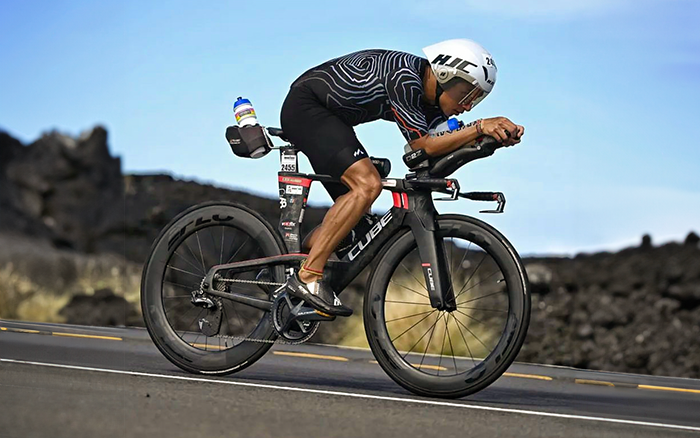Years ago, tubeless tires had little to offer triathletes, but today it’s the popular choice, and for good reason.
Tubeless and Mechanical Efficiency
No wasted watts. How can going tubeless make you faster? Tubeless tires have lower rolling resistance values compared to butyl tubed tires. And lower rolling resistance makes you more efficient, which saves you time. (Note: If you want to use tubes, you can lower your rolling resistance by using latex tubes, but they come with some issues.)

Basic Tire Definitions
Clincher Tire: A tire constructed with a bead that hooks onto a wheel with a clincher type rim
Tubular Tire (Not Tubeless): A bicycle tire that is stitched closed around the inner tube to form a torus and then glued to the wheel. Not common, often used in
Tubed Tire: A clincher tire that uses a tube to inflate the tire
Tubeless Tire: A clincher tire that inflates without a tube and uses sealant.
Tire Set-up Materials
Tubed Tires: Tire, Tubes, Correct length of valve extender
Tubeless Tires: TL tire, tubeless valve, tubeless rim tape, sealant
Tubeless Tire Options
When it comes to triathlon, tubeless tires are relatively new and options were limited. These days, some of the best tubed tires now have tubeless versions like our trusty favorite the Continental GP 5000. Even though road tubeless is still progressing, the tire options available today make going tubeless an easy choice.
Tubeless Tires and Wheels
Wheels are now being developed to make setting up tubeless tires easier.
The FLO All Sport line was designed to make tubeless installs easy (don’t worry, tubes are still okay too!). To create a good seal, the tires will be tight, which can take some getting used to, but we have a getting started guide with detailed videos to help with all your tire set up needs.
Wheel 1:1
At FLO we love tubeless. If you’d like to discuss tubeless for your next triathlon, please schedule a Wheel 1:1.

Co-founder at FLO Cycling. Jon manages the day to day operations and acts as the lead engineer for all FLO products.
